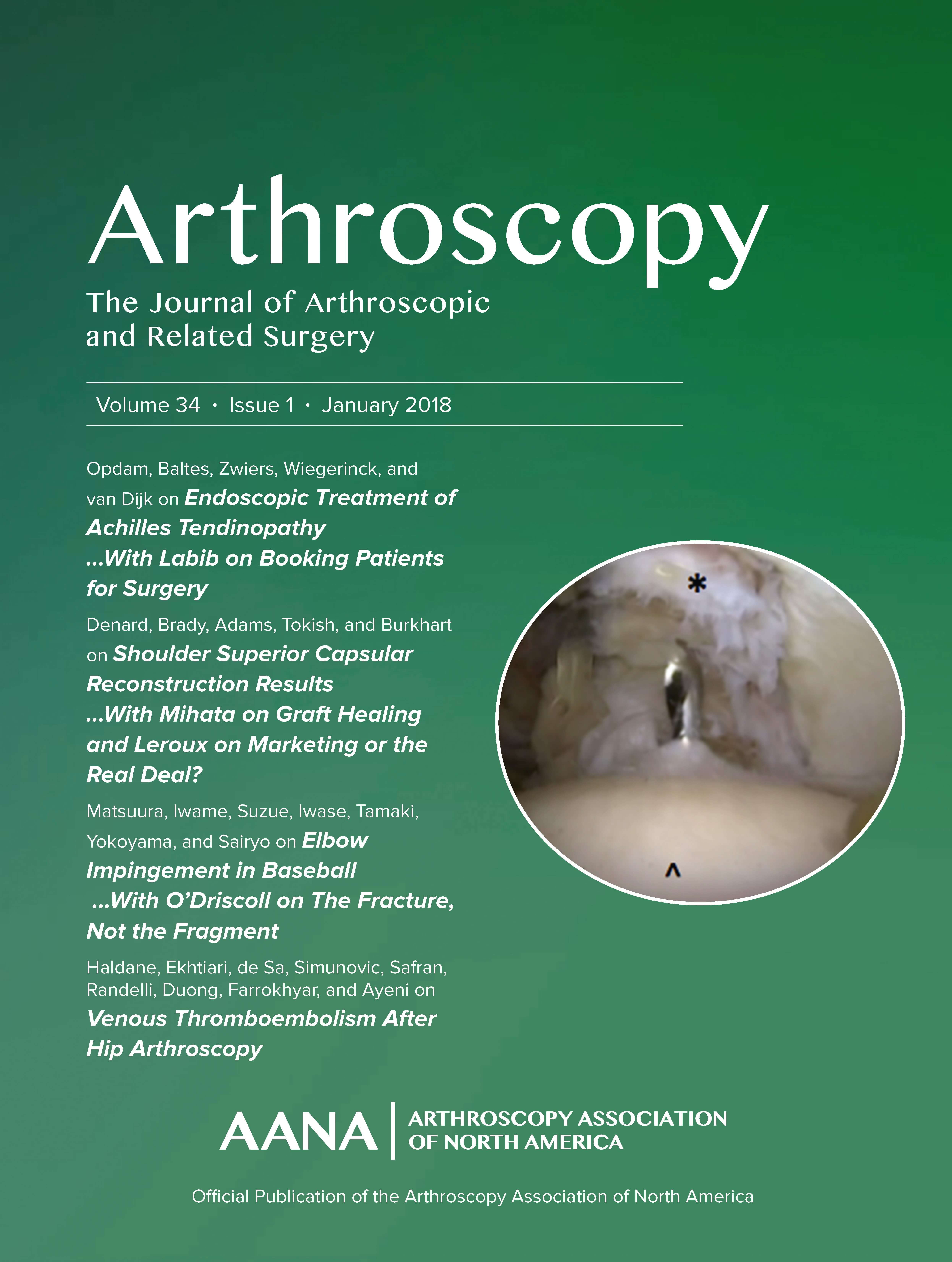
Double-bundle ACLR offers better anterior and rotational stability than single-bundle ACLR

Double-bundle ACLR offers better anterior and rotational stability than single-bundle ACLR
Outcomes of Anterior Cruciate Ligament Reconstruction Using Single-Bundle Versus Double-Bundle Technique: Meta-analysis of 19 Randomized Controlled Trials
Arthroscopy. 2013 Feb;29(2):357-65. doi: 10.1016/j.arthro.2012.08.024Did you know you're eligible to earn 0.5 CME credits for reading this report? Click Here
Synopsis
19 randomized controlled trials (RCTs) (1676 patients) examining the effects of double-bundle (DB) and single-bundle (SB) anterior cruciate ligament (ACL) reconstructions were evaluated to determine which of the two techniques provided better stability and functional outcomes. Following comparisons, results indicated that DB ACL reconstruction provided better anterior and rotational stability and higher IKDC score than SB ACL reconstruction.
Were the search methods used to find evidence (original research) on the primary question or questions stated?
Was the search for evidence reasonably comprehensive?
Were the criteria used for deciding which studies to include in the overview reported?
Was the bias in the selection of studies avoided?
Were the criteria used for assessing the validity of the included studies reported?
Was the validity of all of the studies referred to in the text assessed with use of appropriate criteria (either in selecting the studies for inclusion or in analyzing the studies that were cited)?
Were the methods used to combine the findings of the relevant studies (to reach a conclusion) reported?
Were the findings of the relevant studies combined appropriately relative to the primary question that the overview addresses?
Were the conclusions made by the author or authors supported by the data and or analysis reported in the overview?
How would you rate the scientific quality of this evidence?
Yes = 1
Uncertain = 0.5
Not Relevant = 0
No = 0
The Reporting Criteria Assessment evaluates the transparency with which authors report the methodological and trial characteristics of the trial within the publication. The assessment is divided into five categories which are presented below.
4/4
Introduction
4/4
Accessing Data
4/4
Analysing Data
4/4
Results
3/4
Discussion
Detsky AS, Naylor CD, O'Rourke K, McGeer AJ, L'Abbé KA. J Clin Epidemiol. 1992;45:255-65
The Fragility Index is a tool that aids in the interpretation of significant findings, providing a measure of strength for a result. The Fragility Index represents the number of consecutive events that need to be added to a dichotomous outcome to make the finding no longer significant. A small number represents a weaker finding and a large number represents a stronger finding.
Why was this study needed now?
ACL ruptures are one of the most common injuries in those taking part in athletic activities. ACL reconstructions are typically performed using the SB approach, but recent studies have suggested that the DB method provides better clinical outcomes and a lower risk of developing osteoarthritis. However, there is not enough evidence to confirm this. Therefore, this meta-analysis aimed to determine whether DB ACL reconstruction resulted in better functional results than SB ACL reconstruction.
What was the principal research question?
Does DB ACL reconstruction better restore normal knee kinematics and provide better clinical outcomes than SB ALC reconstruction?
What were the important findings?
- Heterogeneity across 14 studies with results for the pivot shift test (grades A, B, C, D) was high (I-squared: 83.8%). The RR for patient being graded A was 0.77 (95% CI: 0.67 to 0.89), this suggested that there were significantly more patients graded A in the DB group.
- For anterior stability, measured using the Lachman test, the RR was 0.84 (95% CI: 0.78 to 0.92), which suggested that more patients in the DB group were graded A. Heterogeneity was relatively small (I-squared: 38.8%).
- For anterior stability, measured using KT-2000 and KT-1000, the overall combined SMD values significantly preferred DB ACL reconstruction (SMD: 0.26; 95% CI: 0.05 to 0.46).
- The IKDC objective score (SMD: -0.08 (-0.43, 0.15)) for functional outcome displayed a significant difference between SB and DB groups, favouring DB reconstruction (RR: 0.80 (0.68, 0.93)).
- The correlation coefficient between the SMDs and RRs was calculated to be 0.034.
- Begg's test indicated that no publication bias existed in the pivot shift test (p=0.635).
What should I remember most?
The results from this meta-analysis indicated that better anterior and rotational stability and higher IKDC scores were obtained in those patients who underwent DB ACL reconstruction compared to SB ACL reconstruction. No significant differences were displayed between the two techniques for subjective outcomes.
How will this affect the care of my patients?
DB ACL reconstruction is better than SB ACL for re-establishing stability, however, there were no significant differences in subjective outcomes between these methods of reconstruction. For this reason it is still unclear which method of reconstruction should be recommended. Additional RCTs with larger sample sizes and longer follow-up periods should be conducted in order to provide more evidence for any future meta-analyses regarding this topic. Additional research also needs to be conducted to examine differences between anatomical reconstructions.
Learn about our AI Driven
High Impact Search Feature
Our AI driven High Impact metric calculates the impact an article will have by considering both the publishing journal and the content of the article itself. Built using the latest advances in natural language processing, OE High Impact predicts an article’s future number of citations better than impact factor alone.
Continue



 LOGIN
LOGIN

Join the Conversation
Please Login or Join to leave comments.